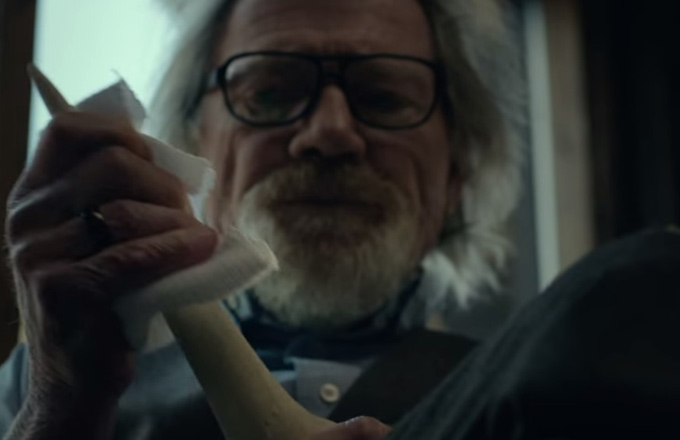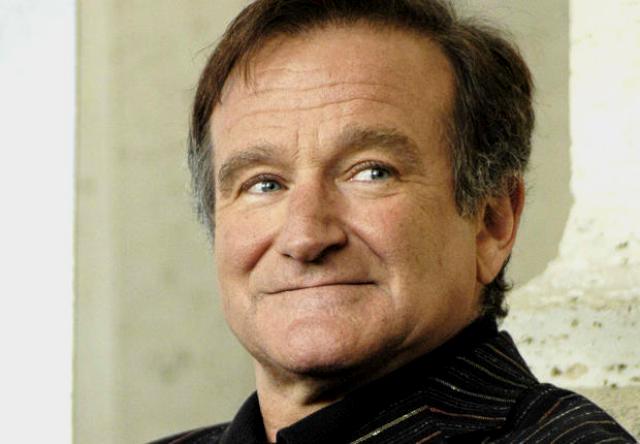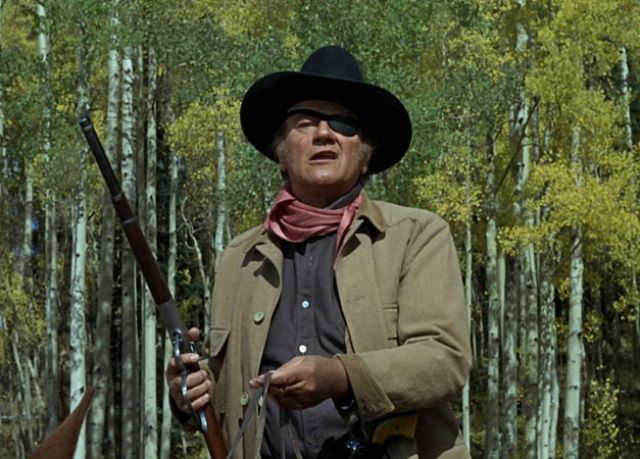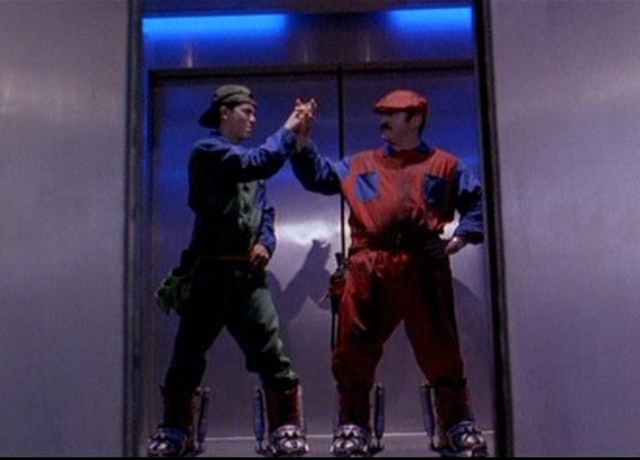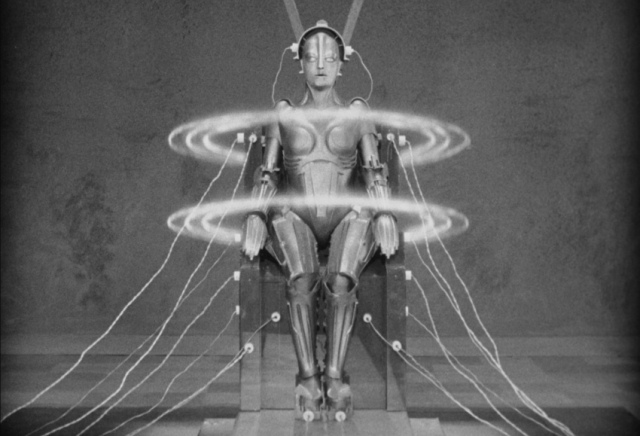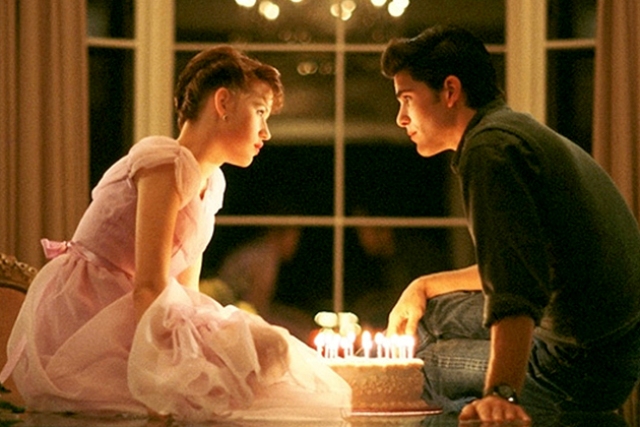Social Media has moved political movements, public event awareness, and even budding careers into places unseen faster than ever before, but what is most interesting about social media today is how it allowed the average person to have a say in what’s going on in their culture. And there is no other place that has exploited that accessibility to an audience better than the entertainment industry. Whenever you see a movie or a TV show advertised, it often includes a web address listed to entice you the audience to visit their home page and learn more about their product. That or it will include a “hashtag” phrase that you can link to on Twitter and/or other social media sites to let your friends or the actual film companies know that you are directly talking about their show. It’s obviously a marketing ploy by film executives to generate interest and excitement over their new projects, but it also represents an interesting new trend in Hollywood, where interactivity between the filmmakers and the audience is now more closely entwined than ever before. Social media offers a very direct link to gauge how a large group of people is feeling at the moment, and that has helped the entertainment industry figure out what are the trends that matter to which they can directly market. Not only that, but social media also motivates large groups of people instantaneously, which is helpful if what you want to market comes out of more of the underground of pop culture, and you need to grow awareness in a quick and cheap way. But, though films have used social media for a while now as a tool for marketing, it has only been recently that it has actually influenced the actual inceptions of movies. And naturally, when the Twitterverse inspires the creation of a new film, it’s got to be something that is very much “underground.”
Enter renowned comedy filmmaker Kevin Smith, who’s become noteworthy not just for his canon of flicks, but for being a unique personality both on screen and on social media. After his film career turned a little rocky in the late 2000’s, bottoming out with his horrible experience directing 2010’s Cop Out, Smith turned his attention away from Hollywood and towards a new passion, which turned out to be his weekly podcast. What started out as a modest show where Kevin and his buddies could discuss topics freely in humorous, unhinged discussions soon developed into a vast network of multiple shows, and soon Kevin Smith’s “Smodcast” became a launching point for a new phase in Kevin Smith’s career as a filmmaker. With a wide reaching show like his, he could promote his new projects in ways that he was never able to before, which became helpful when he decided to abandon the traditional route of film marketing to promote his 2011 film Red State. But, what he soon learned on his podcast was that he was able to generate new ideas for stories and actually go directly to his audience for feedback, knowing that most of his fans were indeed already listening in. This was something that happened during an episode of his Smodcast called “The Walrus and the Carpenter,” where he and his longtime producer and co-host Scott Mosier discussed a bizarre article they found online, about an ad put into a British newspaper inquiring for a new roommate to help a person with their rent and care-taking. The catch; the new tenant had to wear a walrus costume at all times. This of course spurned on Kevin Smith’s imagination and the whole episode of the podcast involved Kevin and Scott playing out that scenario in a hilarious but twisted way.
This was in no way different than most of the many other discussions Kevin and Scott have had on their show, but what made the episode special was the fact that Kevin saw potential in the idea. Indeed, within the same episode, Kevin Smith wondered if he could actually make the movie that they were dreaming up on the spot. He knew he had the means and the connections to make it happen, but what he didn’t know was whether or not he should. So, he asked his audience to go to Twitter and let him know specifically if he should make the movie or not; all they had to do was either tweet #Walrus Yes or #Walrus No. Not surprisingly, nearly everyone who follows Kevin Smith tweeted in the affirmative, and Smith didn’t hesitate to make good on that promise. He quickly drafted a script, got the funding and the cast lined up in no time, and within a years time, he had a film ready for the spotlight. And indeed, every weird thing that Kevin and Scott jokingly dreamed up on the podcast made it to the screen, in every disturbing and hilarious detail. The final film itself, Tusk (2014) may not be anything groundbreaking on the surface, but the fact that it came from such an unexpected origin is what ultimately makes it groundbreaking. Had Kevin Smith not put the idea up to a vote on his Twitter page, the movie would never have been made. This is what makes the existence of Tusk so interesting because it is 100% a film motivated by social media. It’s not just another film that uses Twitter as means for promotion. We wanted to see this movie happen, we used social media to make it happen, and now it’s playing nationwide in our local cinemas. Kevin Smith’s savvy-ness with social media may have given him a fun exercise in film-making, but the means to make it happen may be more groundbreaking than anyone realizes.
Back in the early days of Hollywood, the only way that audiences could influence what came out of the entertainment industry was to speak with their wallets. If a film was bad, audiences could just ignore it, but after a while, Hollywood found a way to work around this and they used marketing tricks to make even their most inferior products sell well at the box-office. Trends would come and go with the passing years, but whatever films were being made were still dictated by the aspirations of the directors, the producers, and/or the studios. The audience never could have a say in what stories they wanted to see; it was merely down to the choices of whatever films were available at the moment. Thankfully there’s so much variety out there in the film market that anyone could still find something that interests them at their local cinema, so it’s not like audiences have been cheated by this system. But that prompt to have a say in what films actually get made has been largely been left out of the public’s hand. Instead, the choices made by Hollywood have been more about guessing what audiences want than actually knowing what they want. Indeed, even with social media being as widespread as it is now, it’s still difficult to gauge exactly how everyone will react to something. Back in the early days, the studios would sometimes rely on polls and surveys to see what audiences wanted in their movies, but polling only reaches a handful of people and it’s mainly slanted one way or another depending on how the survey’s were conducted. Also, Hollywood has made the big mistake of having focus groups and test screenings determine some of the final cuts of films, which again is relying on a very narrow margin of people to influence and compromise someone’s vision.
The reason why Tusk is groundbreaking is because it removed the guessing game part of the equation and puts the idea up to audiences before any movement can be made on the film at all. Kevin Smith’s fanbase spoke up and indeed said that “we want this to happen,” and the rest was up to Kevin to fulfill. He didn’t have to test screen the footage to see if it would appeal to a wider audience, or get rebuffed by studio executives who thought the idea was too bizarre to be made. Here, thanks to the response on Twitter, Kevin Smith had the voice of the audience behind him, telling him directly that this story needed to be told. Indeed, by letting the audience in on the process at the very beginning, you have this ability to get people behind it early and generate excitement for it before it even sees completion. It actually works better that way than any kind of marketing, although that certainly helps as well. And it thankfully let’s audiences know what to expect and not feel like they were duped by the studios into feeling excited for something that didn’t deserve it. People know what to expect with Tusk, because they’ve been following Kevin Smith’s whole journey with it. In fact, the whole lead up to the movie’s release, documented through Kevin Smith’s own correspondences on Twitter and his podcast, has helped to generate even more interest in the film. Though Kevin Smith may have just wanted to connect with his audience for some well intentioned feedback, he may have also started a whole new trend in film marketing that studios may be following in the years ahead.
Though Tusk came about through an already built-in brand that it’s already famous creator has built over the years, it does show how some underground film-making can use social media to help gain exposure for their products. This is something that has been growing over the last few years and independent film-making is seeing new life today thanks to new forms of crowd-source funding that has also arisen from social media. Today, websites like Kickstarter and Indiegogo are allowing filmmakers who have visions that exist outside the norm find the funding they need in order to make it a reality, and it’s all made possible by getting the word out directly to the audience. The great thing about the crowd-sourcing trend is that it puts the power directly into the hands of audiences to actually make a movie happen. For most filmmakers, finding the funds is the hardest part of the process, so by going online and soliciting funds from the fans directly, with perks like screen credit attached of course, they are able to bypass the whole process of trying to woo less interested investors. Though many films like these will be micro-budgeted even with strong fan response, it nevertheless will give the audience a financial say in what they want to see. Sometimes, when the fan-base is strong enough, a film will get the funding it needs in a big way. Take for instance the Kickstarter fund set up for the making of a movie based on the series Veronica Mars. The Veronica Mars movie managed to raise $4 million in a short amount of time, and with that show of goodwill from a dedicated fan-base, the production team wasted no time making the movie a reality. That’s one example where a film that could never have gotten made the old-fashioned way, due to lack of interest in the industry, suddenly became possible due to the financial support of it’s own fans.
Although there are many benefits to programs like Kickstarter to help fledgling filmmakers get the funding they need or help unique voices be heard outside of the system, there are still drawbacks to audience driven productions. When filmmakers take to Kickstarter, they need to be sure that they are listening to their audience, and not just using the site as a means for some easy cash. If audiences are investing in something, it’s because they want to see something very particular, and not just what the filmmaker believes the audience deserves. Like with more high profile investors, filmmakers have to be beholden to those who invested money into their projects, including taking in creative input that those same investors suggest. When your film comes from thousands of investors like it would from crowd-sourcing, the same should also apply. This probably matters little when the movie that is getting funded is bringing an already familiar property to the big screen, like taking the Veronica Mars series and turning it into a film, but when the film is something new, the filmmaker owes it to their audience to include them in on the creative process. Filmmaker Spike Lee ran into trouble recently when he took to Kickstarter as a way to fund his next film so that he could avoid having to appeal to studio investors. The complaint from audiences came from the fact that Lee was using crowd-sourcing as little more that means to fund his movie, and that he was still going to do things his way without the input from his fans who invested their money in it. It could be said that just by funding the movie, the audience would have already spoken out on supporting Spike Lee’s project, but even still, one has to recognize that there’s more to that process than just finding a quick source of money.
Kevin Smith’s Tusk had the benefit of coming from a filmmaker who indeed had the connections and was listening to what his audience had to say. Though Kevin Smith’s movie may be a small oddity, it nevertheless provides us with an early outlook at how movies may be developed, produced and sold in the future. Today, audiences now have more say in what kind of movies get made than they ever have had before, and it’s all thanks to the new advances made in social media; and also thanks to people in the media who understand how to use those tools well. Not only are we getting filmmakers emboldened with new avenues of finding ways to reach their audiences, but the audiences themselves are beginning to also strong-arm the filmmakers into making the movies they’ve always wanted to see. Even rumors are now influencing film-making decisions, as some people in the media are using places like Twitter to gauge public reaction to potential film ideas before they even exist. Not long ago, word spread online that Disney was working on a third Father of the Bride movie that was centered on gay marriage. While this caused an uproar almost immediately, it was revealed later that no plans of any kind were being made by Disney on such a project, but because the feedback on the rumor was so strong, there is actually real development now on that idea that could potentially see the light of day if the curiosity remains out there. That’s a kind of audience power that has never been seen before, and it will probably spurn on development for movies in the years ahead that may have struggled to get off the ground before. If there’s an audience out there for it, those movies will be made, and social media has helped to make that link between audiences and filmmakers that much stronger. Time will tell if it leaves a lasting impact on film production as a whole. I know for one thing is that something like Tusk could only have become a reality because of this special link.
